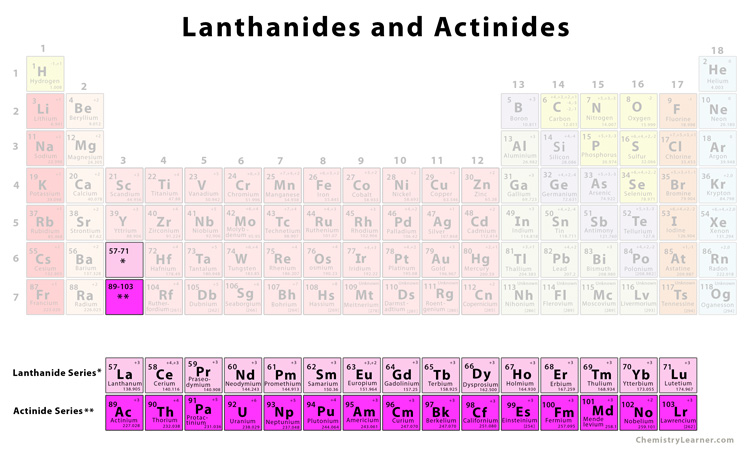Lanthanides and Actinides
Lanthanides and actinides are two prominent families of the periodic table of elements. Discussed below are the differences between the elements in these two families and their common properties.
Why are the Lanthanide and Actinide Series Separated from the Periodic Table
Lanthanide and actinide are separated from the main body of the periodic table because of how electrons get filled up. They belong to the category of f-bock elements in which the f subshell is progressively filled as electrons are added to the atoms. The properties of these elements differ from d-block and s-block. Another reason for placing them below the main body is that they fill up too much space and for the simplicity of printing on a standard letter size paper.

Lanthanides and Actinides on the Periodic Table
Why Actinides Have Greater Tendency to Form Complexes than Lanthanides
Actinides have a greater tendency to form complexes than lanthanides because their ions are smaller and have a large concentration of charges. Therefore, actinides have high nuclear density than lanthanides. Besides, the 4f orbitals in the Ln3+ ion do not participate directly in bonding since the 5s2 and 5p6 orbitals shield it entirely.
References
- Thoughtco.com
- Medium.com
- Shaivikchemistryclasses.com
- Tutorsonnet.com
- Differencebetween.net
- Askiitians.com